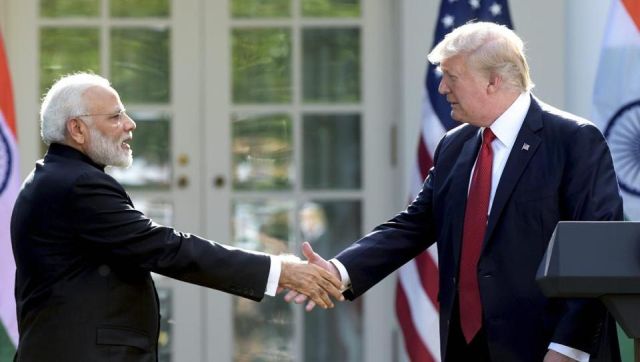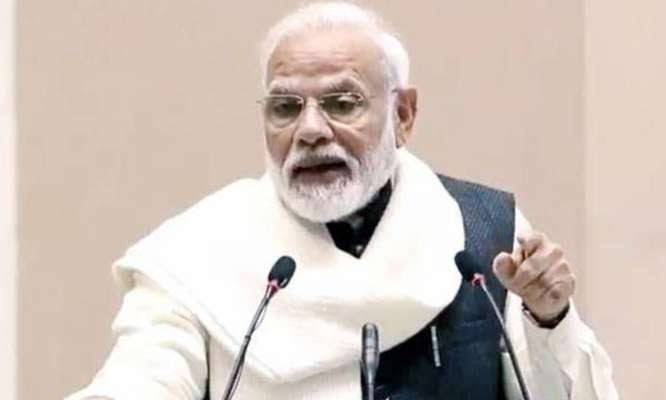
Sixty years hence: Are India and US set for a ‘defining partnership’?
India and the US must discover how to work closely together in order to earn the strategic partnership label and become “one of the defining partnerships of the 21st century,” writes Frank F Islam
This past December, the United States and India celebrated the 60th anniversary of the first visit of a US President to India. That President was Dwight Eisenhower (Ike). Since then five other Presidents have come to India. Their visits and they have all had an impact on the manner in which US-India relations have evolved.
In my opinion, there have been three stages for the US- India relations to date:
- 1947 – 1990: Fledgling Relationship
- 1991 – 2016: Strengthening Relationship
- 2017 – 2020: Functional Relationship
I believe the future stage will be a Strategic Partnership. It will start sometime in the period between 2021 – 2030.
1947-1990: Fledgling Relationship
The Fledgling Relationship really began with President Eisenhower’s visit to India in 1959. Indian Prime Minister Nehru had visited the US in 1949. After that though for a variety of reasons there was only nominal interaction between India and the US for the next ten years.
President Eisenhower’s five-day visit changed that. It was memorable and monumental. Ike addressed the Indian Parliament and his remarks were unexpectedly well received and embraced. More than a million people participated in a public rally for him. When he departed, Prime Minister Nehru said that the President leaves India with a “piece of our heart.”
Eisenhower’s trip kicked off this relationship. After it, there was emerging cooperation in areas such as higher education and agriculture. But things did not progress well politically in the ’70s even though President Richard Nixon visited India in July of 1969 and President Jimmy Carter came to India nine years later in January 1978.
Nixon’s spent less than one day in India. It is reported that his trip was intended to try to reduce the tensions and distrust between him and Prime Minister Indira Gandhi. It did not. When Nixon sided with Pakistan during the 1971 Bangladesh War there was no basis for a rapprochement.
President Jimmy Carter came to India for three days after Prime Minister Gandhi was replaced by Prime Minister Morarji Desai in the 1977 elections. He had several meetings and addressed India’s Parliament. This trip early in Desai’s administration could have solidified the relationship. But, the “cold and blunt message” that Carter delivered on India’s detonation of nuclear bombs and a call to sign the Nuclear Proliferation Treaty fell on deaf ears and cooled things off. In addition, a growing economic nationalism in India throughout the ’70s led to the nationalization of some business sectors and forced companies such as Coca Cola and IBM to close operations. After the turbulent ’70s, relations between India and the US were very quiet throughout the ’80s.
1990 – 2016: Strengthening Relationship
India-US relations began to unthaw in the early ‘90s. That was for economic rather than political reasons, however. Because of the acute financial crisis, the Indian economy was liberalized in 1991. This caused American businesses to flock to India and to begin to use their economic, social and political clout to improve US India relations resulting in the U.S. becoming India’s largest trading partner. Three consecutive US Presidents, Bill Clinton, George W. Bush, and Barack Obama heard those messages and traveled to India.
President Clinton made a five-day visit with his daughter Chelsea in March 2000. This visit came after the Indian nuclear tests at Pokhran in 1998 and sanctions imposed by the US. It removed the sanctions and reestablished a somewhat flagging relationship between what was referred to as two “estranged democracies.”
While he was in office, George W. Bush maintained the upward trajectory for the relationship. And, most notably came to India for 2 ½ days with his wife Laura in March of 2006 during which he signed the landmark U.S. India Civic Nuclear Agreement.
President Barack Obama made two trips to India – one in his first term and one in his second – that took U.S. India relations to the next level. The first visit was for three days in November 2010. Obama addressed Parliament during that visit and met with then Prime Minister Manmohan Singh. The second three-day visit was in January 2015 primarily to participate in the Indian Republic Day Celebration with Prime Minister Narendra Modi.
The Obama visits were especially impactful in terms of the public exposure and statements regarding the nature of the relationship between India and the U.S. At various points leading up to, during and after the visits, President Obama referred to that relationship as “one of the defining partnerships of the 21st century.”
Another focus of emphasis for Obama was on economic ties with the President participating in an event organized by the U.S.-India Business Council during each trip. In conjunction with those events, India and the U.S. agreed to and announced billions of dollars of trade deals.
2017- 2021: Functional Relationship
President Donald Trump took office on January 20, 2017. He has not visited India but has said that he would “some time” and Prime Minister Modi is a “very good friend.” There were high hopes from some that US-India relations would continue to strengthen under his presidency. In point of fact, they have not. They have become primarily functional. In my opinion, that is the best that can be expected with and from this President. Partnership, cooperation, and collaboration are not words that are in his vocabulary. Nationalism, isolationism and protectionism are.
This is most true when it comes to trade relations and negotiations. One need only examine the Trump approach to working with Mexico, China, Canada and others to recognize this.
For the first two years of the Trump administration, India got by relatively unscathed compared to many other nations. Near the end of 2018, Alice Wells, the Acting Assistant Secretary of State for South and Central Asia told the Press Trust of India, “This has been a landmark year for US-India ties as we build out stronger relationships across the board.”
Then, in the first half of 2019 things became unhinged as relations were strained and India and the US got into a tit-for-tat tariff war after the US terminated India’s Generalized System of Preferences which allowed India to send certain imports to the US duty-free. By mid-year, cooler heads appeared to be prevailing and there was rumor after rumor that a new trade deal was being cut and would be announced soon.
On September 24 at the UN meeting in New York City, Trump said “And, I think very soon, we’ll have a trade deal.” At a December 11 meeting of South Asia experts convened in Washington DC jointly by the South Asia Center of the Atlantic Council and the Asia Group on the sixtieth anniversary of Ike’s India visit, Acting Secretary Wells stated “The talks are in a better place. They take much longer than we would like. The deal will be modest but hopefully a stepping stone to a more ambitious trade liberalization.”
She went on to caution, “If India wants to be an exporter, if India wants to use trade to drive job production and to address some of the economic challenges it is currently facing, it needs to be competitive in its exports, which many companies say right now, it’s not because of the tariff barriers.”
There will undoubted be a trade deal and it will probably be some time soon. But, in spite of the fact that President Trump has hosted Prime Minister Modi at the White House in 2017 and played second fiddle to Modi at the massive “Howdy Modi” event in Houston Texas in September 2019 there will not be a really strong strategic relationship between India and the U.S. That is primarily due to the fact that such a relationship is contrary to President Trump’s modus operandi and personal style.
2021 – 2030: Strategic Partnership
India and the U.S. will have a strategic partnership in the future, however. It will come after President Trump is no longer in office. If Trump loses his 2020 re-election bid, that partnership could start being developed as soon as 2021. If he wins, it will not start developing until 2026.
The reason that such a partnership is likely is that there are many driving force factors that will eventually bring it about. The primary ones include:
- Shared democratic values and common geopolitical interests. President Eisenhower’s early connection to India was based on both of these issues. The recent emergence of China and Russia on the world stage make bonding between US and India much more important than it was sixty years ago.
- Trade and commerce. While there have been a few strident talking points in the past two years, US goods exports to India went up significantly in 2018 as did US imports from India. Trade may be off in 2019 because of the conflicts in the past year. But, the figure set by CUTS International of $500 billion in terms of US-India trade by 2030 seems imminently doable.
- The presence of an ever-growing and influential Indian-American community. By the time the next US census takes place the population will be over the four-million mark. There are also five Indian Americans in the US Congress.
President Dwight Eisenhower was a visionary. Speaking to India’s Parliament in 1959, he stated that the welfare of India and the US were linked together.
The prospect and potential that he envisioned for an alliance between India and the US is being realized. There is still quite a way to go to achieve it fully and there are no guarantees it will happen because the future is promised to no one.
Either country could lose its course and make the partnership less feasible if it abandons its commitment to a unifying and uplifting democracy. India and the US must discover how to work closely together in order to earn the strategic partnership label and become “one of the defining partnerships of the 21st century.”
The journey has begun. Time and tenacity will determine how and where it will end.
(The writer is a civic and thought leader based in Washington DC. He can be contacted at ffislam@verizon.net)


